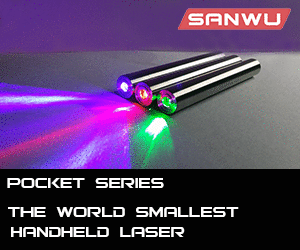Steve,
I'm going to use 808nm. I'm looking at lenses with a flat side for either the input or output lens too, trying to see what it adds or takes away to have both sides the same or one side of a lens plano. I see designs for beam expanders with lenses either way for both the input and outputs glass. My guess is that having both sides concave or convex just makes the lens more refractive in either expansion or convergence for a given cut, would that assumption be correct? If true, then you could buy a lens with a plano side which can have much the same properties of a bi-convex or bi-concave, just requiring a deeper cut for the same amount of refraction for the same properties, up to a limit, I imagine. If my concepts are wrong someone please give me a heads up, still trying to get my bearings on basic optic principles.
I'm also trying to see if there is much advantage to using a spherical mirror as the collimating device in a beam expander and then having the resulting beam go through a convex refractor lens too, as a second collimating device, if that would give me a lower divergence than one alone. Of course, at a cost of additional loss when using both together. Doing google searches on that now, hard to find the answer.
Here are some ray patterns for spherical mirrors:
https://www.google.com/search?q=sph...AWEnoCAAg&sqi=2&ved=0CCcQsAQ&biw=1188&bih=585
Edit: Here's a ray pattern of a convex-plano lens I just found, this answers some of my basic questions, the right most illustration shows how a diverging light from a negative lens is collimated into a parallel output. .
This ray pattern of a spherical mirror, below, shows how it can collimate diverging light into parallel beams. From this it appears the addition of a convex lens in front of the mirror will only collimate parallel light back into a focal point:
So, the idea of placing a convex lens in front of the output of a spherical mirror used to collimate diverging light into a parallel output won't work. Next is to find a way to use a large mirror and a lens alone to make a large beam expander, I don't know yet, still searching. My take on the situation right now is the mirror can be used in place of a convex lens but the focal point isn't very long for the spherical mirror I found, I need to find a shallow spherical mirror so that it has a long focal length to use as a beam expander with a negative lens. I'm hoping to find a light weight mirror with a long focal point instead of a lens to save weight and allow a tighter divergence over a refractive convex lens in its place.







